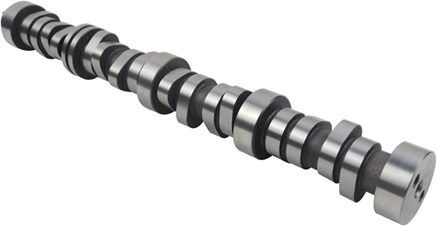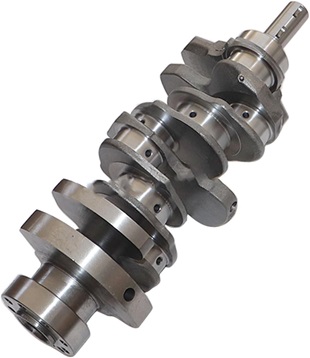If you’ve ever found yourself knee-deep in car lingo or simply curious about what makes your engine tick, you’ve probably come across the terms “camshaft” and “crankshaft.” Sure, they both have “shaft” in their names, but what’s the real deal behind these crucial engine components? Buckle up, because we’re about to dive into the fascinating world of automotive internals. The camshaft and crankshaft are like the dynamic duo of your engine, each playing a unique role in the intricate ballet that powers your ride. So, if you’ve ever wondered why your car purrs like a content kitten or roars like a beast, understanding the difference between these two power players is key. Let’s rev up those engines of curiosity and break down the nitty-gritty of camshafts vs crankshafts!
Outline
ToggleWhat is Camshaft? How Does it Work?

How Does it Work?
The camshaft operates in tandem with the engine’s crankshaft, translating the rotational motion into precise, timed movements that govern the opening and closing of valves. The cam lobes, strategically shaped on the camshaft, dictate the valve timing and lift. As the camshaft rotates, these lobes act on other components like pushrods or rocker arms, which then transmit the force to the valves. This mechanical choreography synchronizes the valve events with the piston’s position, optimizing combustion efficiency and power output. In essence, the camshaft serves as the conductor of the engine’s internal symphony, orchestrating the harmonious interplay of valves and pistons for smooth and effective operation.
What is Crankshaft? How Does it Work?

How Does it Work?
The crankshaft operates on the fundamental principle of converting reciprocating motion into rotary motion. As the engine’s pistons move up and down within their cylinders, the connecting rods attached to them are linked to offset crankpins on the crankshaft. This arrangement allows the crankshaft to transform the linear motion of the pistons into a continuous circular motion. The rotation of the crankshaft is synchronized with the opening and closing of valves controlled by the camshaft, ensuring a harmonious interaction between the engine’s internal components. Ultimately, the crankshaft’s rotational output is transmitted through the drivetrain, translating the engine’s power into the forward motion of the vehicle. In essence, the crankshaft is the powerhouse that converts the rhythmic dance of pistons into the rotational force that propels your car down the road.
What are the Differences Between Camshaft and Crankshaft?
1. Function and Role
- Camshaft: The camshaft’s primary function is to control the opening and closing of the engine’s intake and exhaust valves. It determines the timing and lift of the valves, ensuring the precise regulation of the air-fuel mixture and exhaust gas expulsion.
- Crankshaft: The crankshaft’s main role is to convert the reciprocating motion of the pistons into rotary motion. It transforms the up-and-down movement of the pistons into a continuous circular motion, which is then transmitted to the drivetrain.
2. Location in the Engine
- Camshaft: Typically located within the engine block or cylinder head, the camshaft is positioned parallel to the crankshaft.
- Crankshaft: Situated in the engine block, the crankshaft is positioned perpendicular to the camshaft.
3. Shape and Design
- Camshaft: The camshaft features lobes or cams that are strategically shaped to control valve movements. These lobes determine the timing and lift of the valves.
- Crankshaft: The crankshaft has offset crankpins that convert the linear motion of the pistons into rotational motion. It often has a cylindrical shape with multiple journals and throws.
4. Motion Conversion
- Camshaft: Converts rotational motion into linear motion, dictating valve movements.
- Crankshaft: Converts reciprocating motion (up-and-down piston movement) into rotary motion.
5. Connection to Other Components
- Camshaft: Connected to the crankshaft through a timing belt or chain, ensuring synchronization between valve and piston movements.
- Crankshaft: Connected to the camshaft, typically through a timing belt or chain, to coordinate the timing of valve events with piston movements.
6. Effect on Engine Performance
- Camshaft: Influences the engine’s power, efficiency, and responsiveness by controlling the timing and duration of valve events.
- Crankshaft: Directly impacts the overall performance of the engine by converting piston motion into rotary motion, providing the rotational force necessary for the vehicle’s movement.
7. Components Acted Upon
- Camshaft: Acts on valves through mechanisms like pushrods, rocker arms, or directly on the valves themselves.
- Crankshaft: Acts on connecting rods, transmitting motion to the pistons.
Understanding the distinctions between the camshaft and crankshaft is essential for comprehending the intricate workings of an internal combustion engine and how these components collaborate to generate power and drive a vehicle.
Are There Similarities to a Camshaft and a Crankshaft?
- Both are crucial components in an internal combustion engine.
- Both are typically made of hardened steel for durability.
- Both are connected and synchronized through a timing belt or chain.
- Both contribute to the overall efficiency and performance of the engine.
- Both play integral roles in the combustion process, albeit with different functions (valve control for camshaft, motion conversion for crankshaft).
Conclusion
So there you have it! We’ve taken a thrilling ride through the heart of your engine, dissecting the dynamic duo of automotive internals: the camshaft and crankshaft. While the camshaft orchestrates the precision ballet of valve movements, dictating the rhythm of your engine’s breathing, the crankshaft is the powerhouse behind the scenes, transforming the piston’s heartbeat into the relentless rotation that propels you forward. These two components might share a common goal of making your ride smooth and powerful, but their roles in the symphony of combustion are as distinct as a drumbeat and a guitar riff. So, next time you pop the hood and gaze into the mechanical marvel beneath, remember, it’s the intricate dance of the camshaft and crankshaft that turns your car from a mere machine into a road-conquering masterpiece. Keep those engines roaring, and happy motoring!

